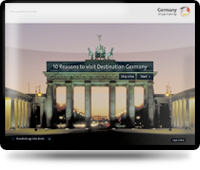Six of Germany's wine regions, the Ahr, Middle Rhine, Moselle, Nahe, Palatinate and Rheinhessen regions, are in the federal state of Rhineland-Palatinate, while the others are to be found in Baden, Württemberg, the Rheingau, the Hessian Bergstrasse region, Franconia, Saxony and the Saale Unstrut area.
Germany's most important viticultural centres are along the Rhine, Moselle and Main rivers and around Lake Constance. The landscape in these areas has been shaped by wine-growing since Roman times, resulting in glorious vistas that can be enjoyed by all. The main grape variety grown here is riesling, a popular grape in demand around the world and the main variety grown in the country. Sixty per cent of world's riesling grapes are grown in Germany, where the typical climate experienced in its wine regions is particularly beneficial because cool autumn nights encourage the berries to ripen slowly, enabling the riesling to develop the characteristic, delicately nuanced flavour that is unique to German wines.




